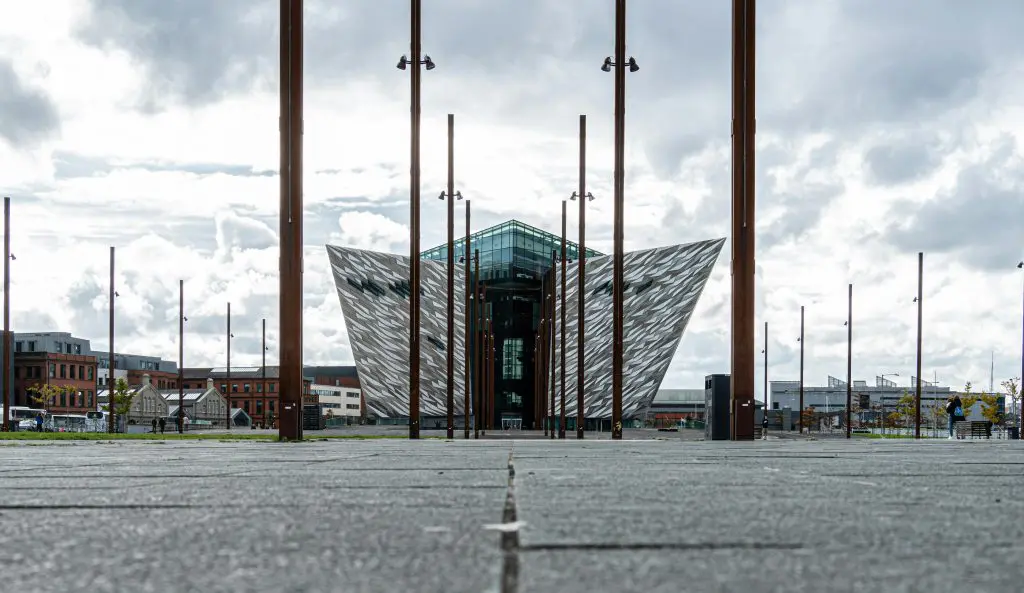
A Rising Hub: Belfast as Eco-Conscious Property Investment Belfast is fast becoming a leading destination for eco-conscious property investors, according to one of Northern Ireland’s most established estate agents, John Minnis. In a market increasingly shaped by sustainability and environmental awareness, more investors are placing environmental impact at the forefront of their decision-making. Sustainability Now a […]
Belfast is fast becoming a leading destination for eco-conscious property investors, according to one of Northern Ireland’s most established estate agents, John Minnis. In a market increasingly shaped by sustainability and environmental awareness, more investors are placing environmental impact at the forefront of their decision-making.
Recent data shows that 76% of property investors in 2025 said sustainability influenced their investment decisions. Over one-third said they had walked away from potential investments because the properties failed to meet ESG (Environmental, Social, and Governance) criteria.
“We are seeing a real step-change in investor attitudes,” said John Minnis. “Features like solar panels, insulation, water conservation systems, and the use of sustainable building materials are now high on their wish lists. Many are retrofitting existing homes, while others are looking to net-zero and passive house designs for new builds.”
Investors are showing interest in both retrofitting existing homes and investing in net-zero and passive house designs. This shift signals that environmental performance is becoming a mainstream consideration rather than a niche concern.
Minnis points to a combination of policy support, clean energy infrastructure, and strong investment returns as reasons why Belfast is standing out to eco-conscious investors.
Belfast is guided by a Local Area Energy Plan that prioritises:
District heating
Large-scale building retrofits
Expansion of solar energy
Over £10 million annually in active grant programmes is currently available to incentivise upgrades that improve energy performance for property owners and investors.
The city also benefits from Northern Ireland’s clean energy assets, including:
£90 million in investments at Belfast Harbour to support offshore wind infrastructure
A strong presence of onshore wind and tidal energy projects
These developments ensure access to clean, affordable, and reliable energy for both new and existing buildings in Belfast.
The growing interest in Belfast for sustainable property investment is part of a much larger global trend known as green urbanism, a planning and development approach that integrates environmental sustainability into every aspect of urban living. Cities around the world are being reimagined as ecosystems where energy efficiency, low-carbon transport, biodiversity, and social equity are prioritised.
Belfast’s alignment with green urbanism principles, such as district heating, sustainable mobility options, and retrofitting of older buildings, puts it in line with forward-thinking cities like Copenhagen, Amsterdam, and Portland. Investors are increasingly looking for such cities not just for returns, but for their potential resilience and liveability in a changing climate.
Belfast continues to offer strong investment fundamentals, with average rental yields around 6%, outperforming the UK average. Investors can benefit from both the relative affordability of Belfast property and capital appreciation potential through ESG-aligned improvements and retrofits.
Properties that are connected to district heating systems or that have undergone comprehensive retrofitting are expected to achieve higher rental income, reduced vacancy, and better long-term valuation as demand for sustainable housing grows.
Major city projects like the Titanic Quarter regeneration and city centre strategies are fostering sustainable mixed-use communities, integrating residential, commercial, and public spaces. These efforts are further supported by:
Expanded active travel corridors (e.g., walking and cycling infrastructure)
Such developments enhance liveability and further reinforce Belfast’s attractiveness for sustainability-focused investors.
Investors aiming to verify the environmental credentials of a property should be aware of independent certifications that measure sustainability standards. In the UK and Europe, notable labels include:
BREEAM (Building Research Establishment Environmental Assessment Method) – Measures a building’s sustainability performance across energy, water use, materials, waste, and more.
Passive House Standard – Ensures ultra-low energy usage through airtightness, insulation, and ventilation systems.
LEED (Leadership in Energy and Environmental Design) – A US-based system gaining traction in international developments.
Belfast developers adopting these certifications give investors additional assurance that a building meets recognised benchmarks, helping to avoid the pitfalls of greenwashing.
With a combination of strong policy backing, clean energy access, compelling financial returns, and growing investor demand for ESG-aligned properties, Belfast is positioning itself as a leading eco-conscious property market.
As John Minnis noted, “This eco-focus is no longer a niche – it’s becoming the new normal, and Belfast is incredibly well positioned to benefit.”
At All-Ireland Sustainability, we’re committed to building a greener, fairer island, together. Stay informed on the latest environmental initiatives, community action, and policy developments shaping sustainability across Ireland, North and South.
👉 Sign up for our newsletter today and be the first to hear about upcoming events, expert insights, and ways to get involved.
Whether you’re a seasoned advocate or just starting your journey, new members are always welcome.
Subscribe now and be part of the All-Ireland Sustainability Membership.